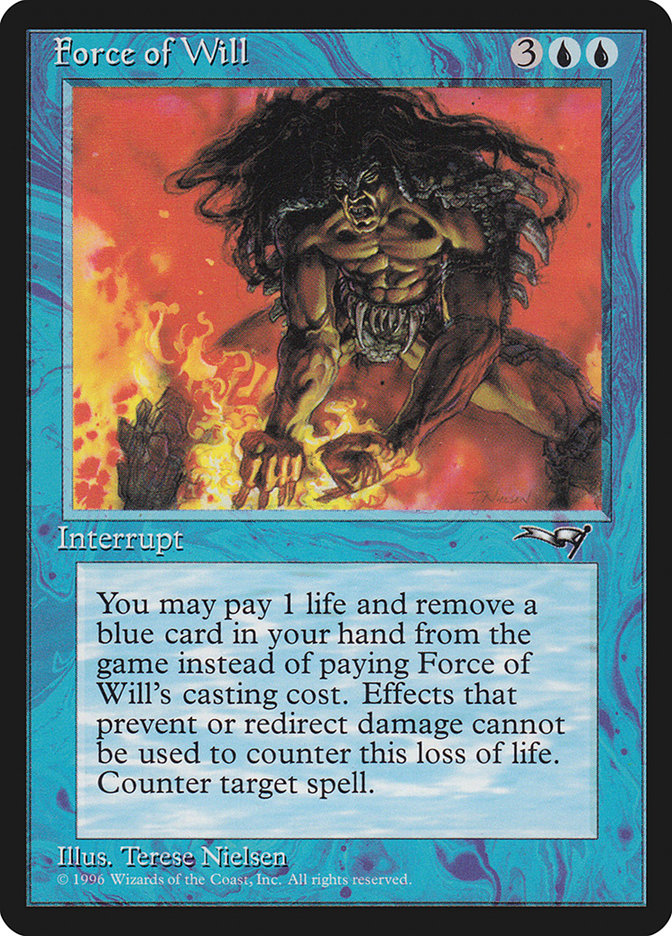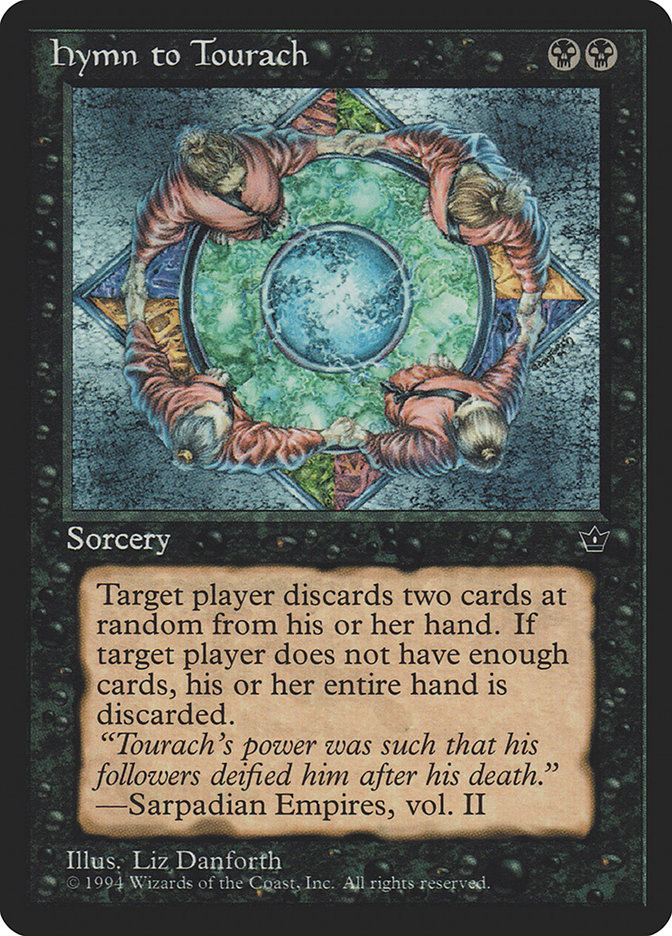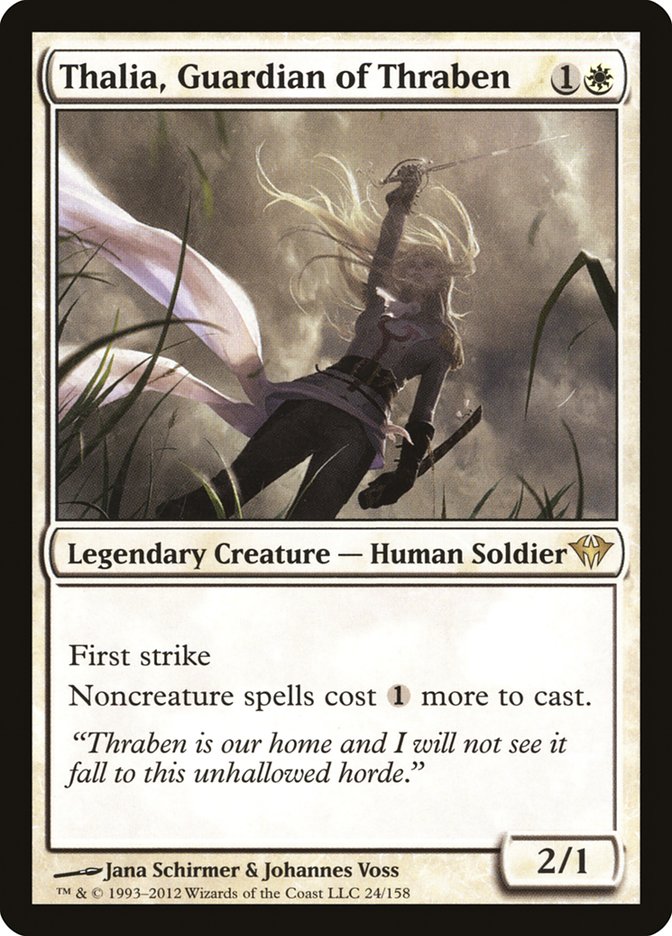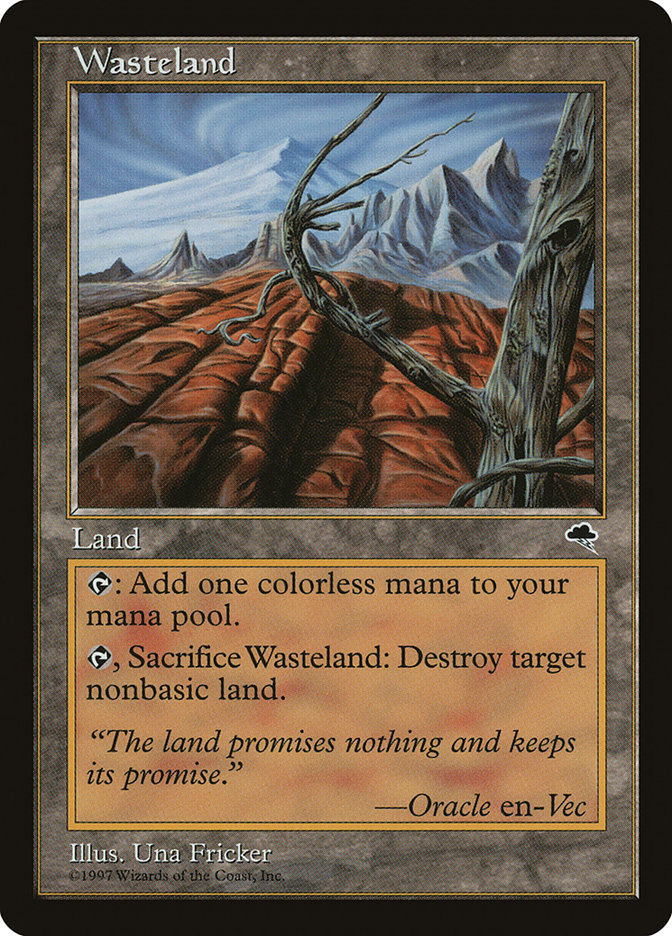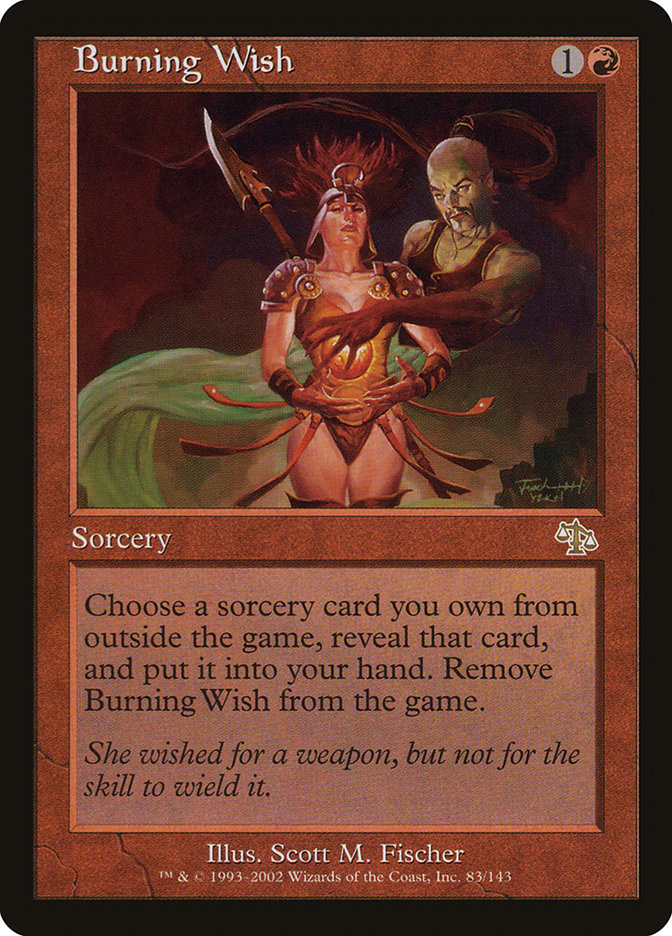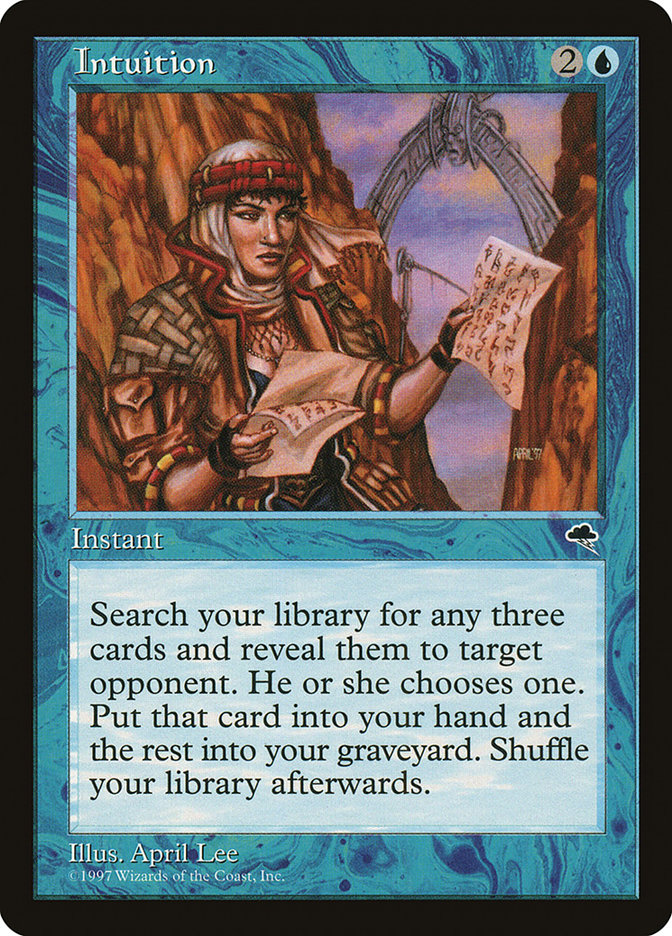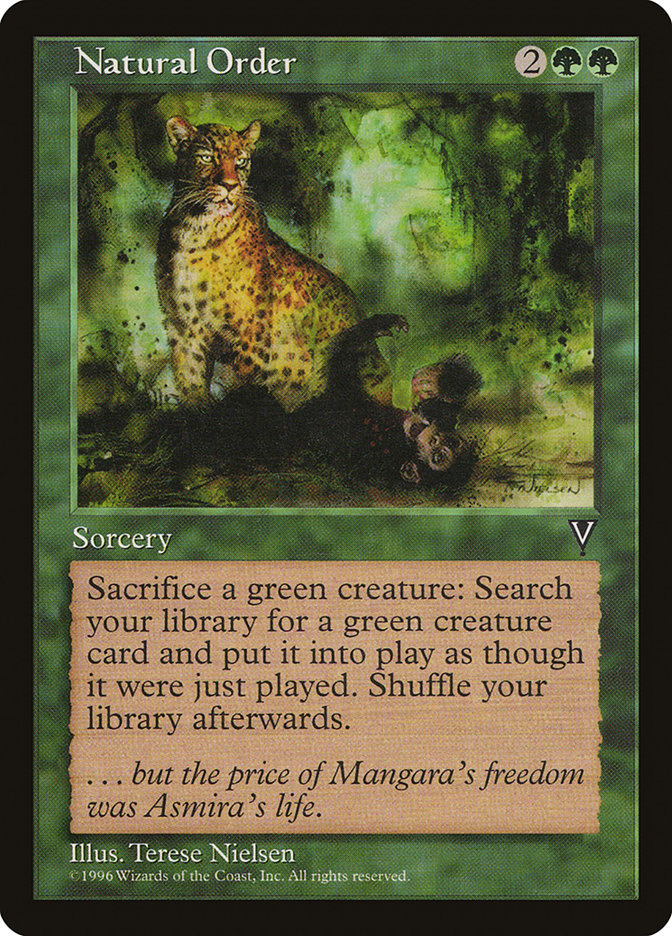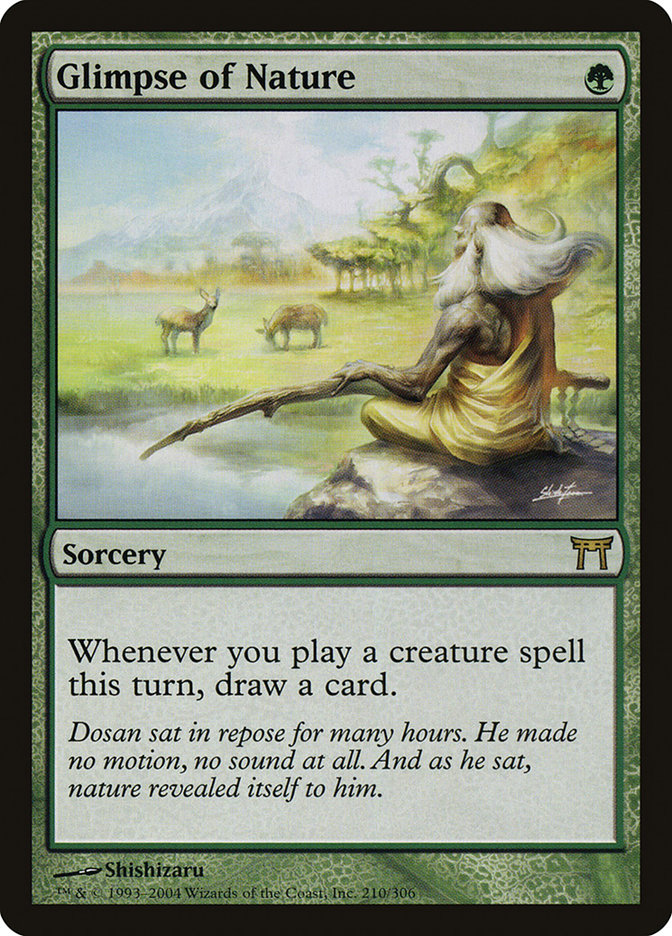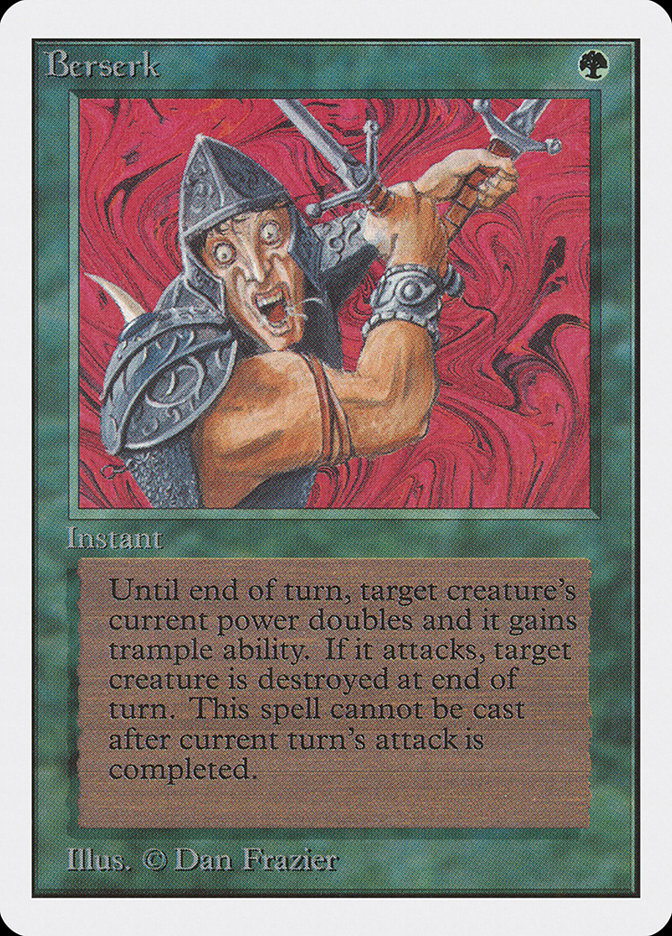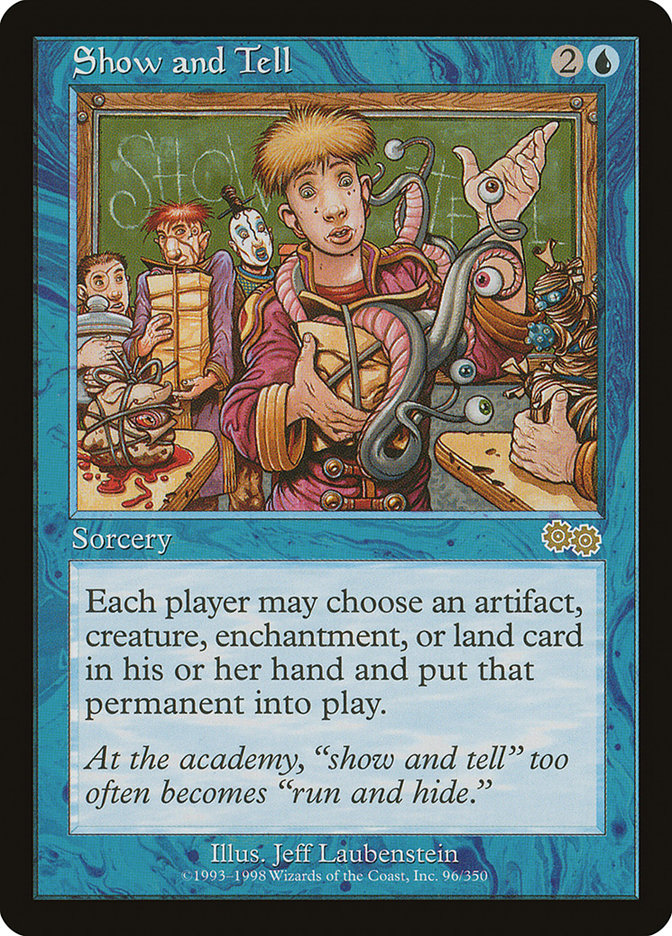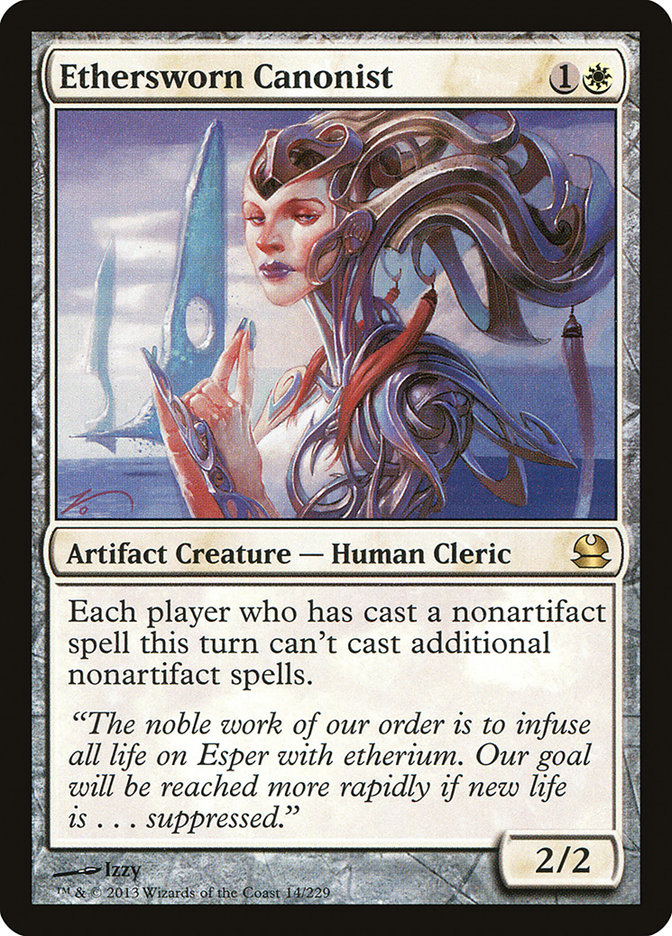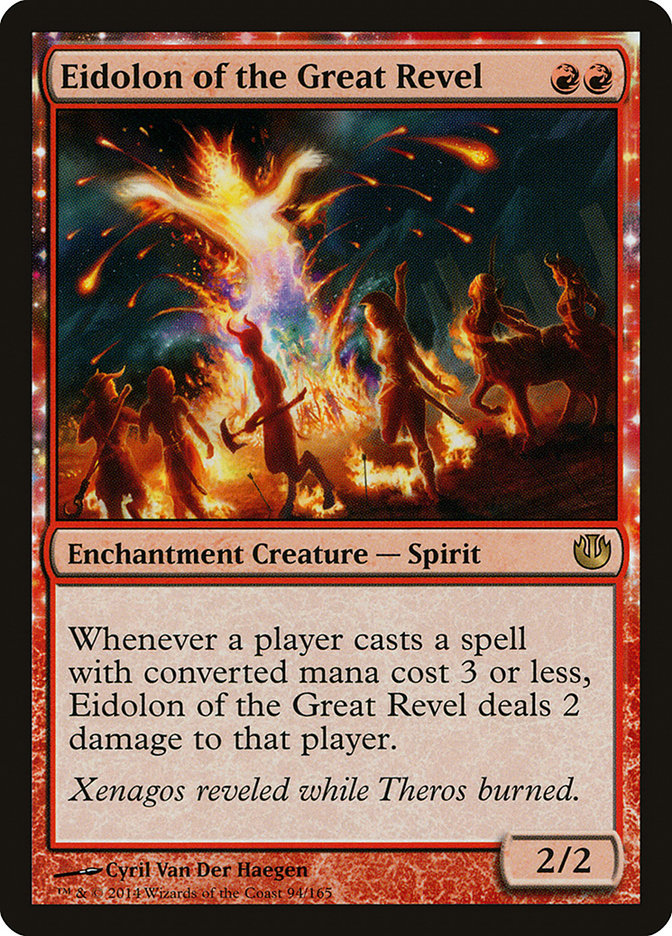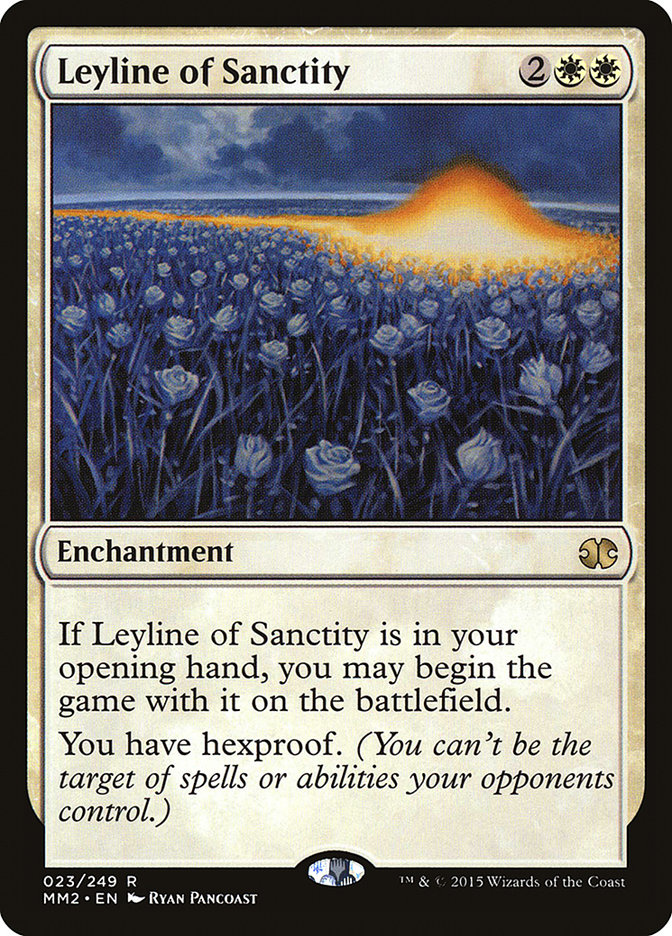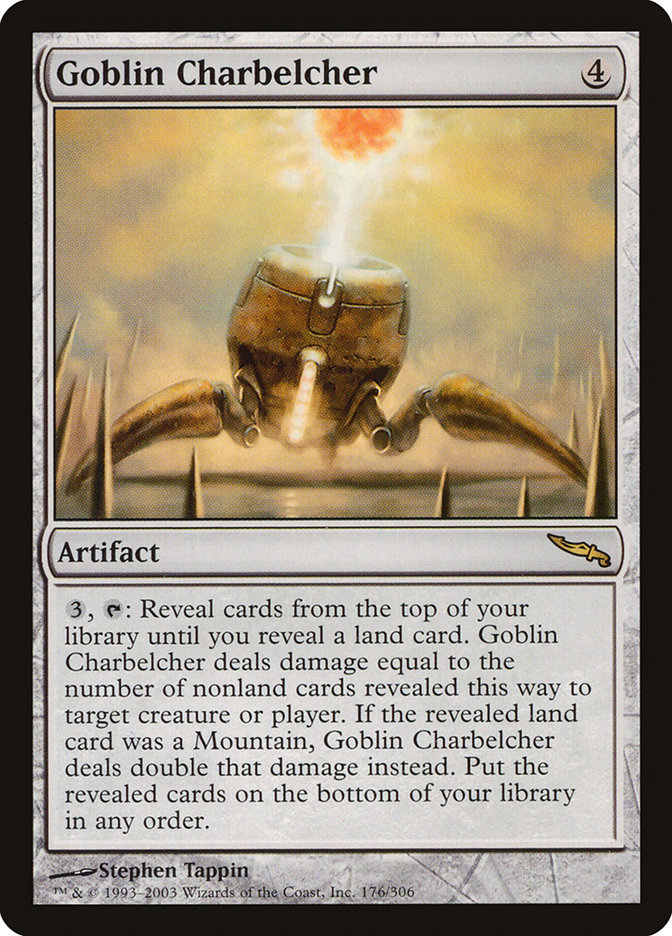If you haven’t read it yet, I suggest reading Part I of II from last week, where I talk about non-combo decks in Legacy.
This week we’re getting down and dirty. Legacy, at its heart, is a wild animal. There are so many powerful cards and interactions that it can be difficult
to keep up, and you could spend every weekend of an entire year battling with a different type of combo. They are numerous, and many of them require
different answers. And because most of them require different answers, we must defend against them in broad strokes.
This is about as generic as it gets for beating up on combo decks. These cards are all easy to play in maindecks because they’re serviceable against a wide
variety of opposing strategies. All of them are bent on keeping the opponent from executing a coherent gameplan. There are others, but these are certainly
some of the most common, and they reach across different archetypes. Or alternatively, these are the least narrow answers for fighting off combo decks.
As you can probably see, most of these are blue, which is one of the reasons why blue is so popular in Legacy. Without access to blue, we lose Force of
Will, which is one of the easiest ways to interact with a combo deck. We don’t care much about extra cards or our life total when we’re stopping our
opponent dead in their tracks.
The thing about combo decks is that they invest a lot of time and resources assembling their combo. That’s what they’re built to do. They will generally
have some means of protection from Force of Will, whether that means playing discard spells or their own Force of Wills, but that just means Force of Will
isn’t the end of the game. The more consistent combo decks can also reassemble their combo in short order thanks to card manipulation like Ponder and
Brainstorm. They can also do this with tutor effects like Intuition or Burning Wish (and a few others). Stopping their combo once won’t always be enough.
But that’s one of the things that makes Legacy interesting. Both players usually have the tools at their disposal to have a good back and forth even if you
aren’t interacting in a traditional sense. You don’t need to play creatures to interact with your opponent. You just need ways to disrupt their gameplan,
and vice versa.
The major drawback from combo decks is that you’re generally putting the onus on your opponent to have the right answer at the right time. When you’re
playing with a combo deck, it can feel gratifying to have a “gotcha” moment, playing your spell(s) that ultimately wins the game. But it can feel pretty
demoralizing to have your strategy picked apart by a precise plan from the opponent. A combination of counterspells, discard spells, and disruptive
permanents will feel like getting put in a headlock, leaving you very little wiggle room for getting back in the game. The true Legacy masters will often
change from one combo deck to another between tournaments based on what hate cards are being played, so as to play against fewer spells that interact with
their combo.
Let’s start with my favorite group.
Creature Combo
Creature-based combo decks are reasonable, but they’re generally slower than other combo decks. They take a bit more time to set up their kill, but the
upside is having an alternate route to victory.
Creatures (28)
- 4 Wirewood Symbiote
- 4 Quirion Ranger
- 2 Birchlore Rangers
- 3 Heritage Druid
- 4 Nettle Sentinel
- 4 Elvish Visionary
- 2 Craterhoof Behemoth
- 4 Deathrite Shaman
- 1 Reclamation Sage
Lands (20)
Spells (12)

While this might not be the optimal Elves list, it is the most recent one I could find. Like Death and Taxes, Elves has a high number of creatures with a
low toughness. That makes cards that can repeatedly deal small chunks of damage incredibly valuable. Elves is also pretty vulnerable to sweeper effects
like Pyroclasm or Terminus, but they have the potential to rebuild afterwards thanks to Glimpse of Nature.
Ideally, Elves will explode with a few mana-producing creatures in the early turns and follow that up with a Natural Order for Craterhoof Behemoth (if all
goes well). But it isn’t one-dimensional by any stretch. It has a card advantage engine with Wirewood Symbiote and Elvish Visionary, as well as a powerful
tutor with Green Sun’s Zenith. Gaea’s Cradle also gives them access to a wealth of mana, which they can use to do some degenerate things. It is not
unreasonable to expect a Green Sun’s Zenith for Craterhoof Behemoth if a Gaea’s Cradle is in play.
While Elves has fallen off in popularity as of late, I’m not exactly sure as to why. It has been a tremendous force in Legacy throughout the last few years
and heralded as the best deck in the format by many of its pilots. Times tend to change, and an increase in popularity of a bad matchup can push any deck
out of Legacy, and I think we can attribute that directly to Miracles. Terminus and Counterbalance really punish Elves, and there isn’t a whole lot they
can really do about it.
If you’re looking to pilot Elves, make sure you are familiar with all the mechanical aspects of the deck. There are a lot of triggers and activated
abilities that must be performed in the right order to accomplish optimal turns, and one mistake can cause a collapse. Elves hinges on a proficient order
of operations, so practice them regularly, even if you aren’t actually playing against an opponent.
Cards to watch out for:
Next up is one of my favorites!
Creatures (12)
Lands (20)
Spells (28)
- 4 Brainstorm
- 3 Force of Will
- 3 Daze
- 2 Berserk
- 1 Stifle
- 4 Invigorate
- 1 Crop Rotation
- 1 Ponder
- 2 Spell Pierce
- 3 Vines of Vastwood
- 2 Gitaxian Probe
- 1 Become Immense
- 1 Dig Through Time
Sideboard

Infect is a fairly new addition to the Legacy format, but mostly just in terms of popularity. You can thank Tom Ross and his back-to-back Invitational wins
last year while wielding this monster. Through thick and thin, Treasure Cruise and back, Tom keeps playing Infect, and for good reason. Few opponents know
the ins and outs of Infect because they have so little experience playing against it. It is a tricky one, to be sure, but you can power through it by
knowing just a few key points of attack.
Vines of Vastwood is already a powerful tool for protecting the Infect creatures, so there is very little reason to give them the ability to deal you an
extra four points of infect on top of saving their creature. That means you should prioritize killing their creatures on your own turn or during their end
step. This point will be negated on occasion when they go for their combo, but most savvy Infect players will only do that if they have multiple ways to
protect their creature or have no other option.
Just remember that when playing against Infect, they have to deal you all ten points of infect. You can afford to take a few points here and there to
progress your board. People tend to forget that, like your life total, your infect total is also a resource. Use it to your advantage, but always be aware
of the threat of death. Invigorate is a strong tool at their disposal that can kill you out of nowhere.
The Brainstorms out of Infect are crucial to their plan. Otherwise, they can easily flood out or just draw the wrong half of their deck (all creatures/all
pump spells). If you have ways to counter their Brainstorms, I would suggest doing so as long as it doesn’t cost you too many resources. Like Delver decks,
their Dazes are also incredibly important for stalling you out in the earlygame, as well as protecting their creatures. If you can play around it, try to
do so. Recognizing when you can and can’t play around Daze will be one of the deciding factors on whether or not you win the game. Getting them to Daze a
bait spell is also preferable if it means landing something they’re going to have trouble beating. After all, Daze does have a bit of a drawback.
Bouncing a land isn’t exactly free, especially so in a deck that plays Vines of Vastwood and Inkmoth Nexus. There’s a reason they play 24 mana sources.
Cards to watch out for:
Show and Tell
I’m giving this one its own section because it has been such an iconic card for as long as I can remember. There have been plenty of variations throughout
the years, and it seems like we get an upgrade every once in a while, but the biggest addition to Show and Tell came with the printing of Griselbrand.
Sneak Attack variants give the deck a bit of breathing room as far as assembling the combo goes. You have essentially eight ways to cheat a creature into
play, as opposed to four (plus possible tutor effects). Sneak Attack also lets you get around random effects that you might not normally be able to beat.
But as powerful as Sneak and Show has been in the past, it has fallen from grace. In the last few months, a newer version of Show and Tell has become
popular thanks to Shouta Yasooka.
Creatures (2)
Lands (18)
Spells (40)

The biggest upgrade to Show and Tell in the last year has been Dig Through Time, though I wouldn’t really have considered it an “upgrade” in the Sneak and
Show versions. Omni-Tell, being mostly blue, allows you to play more basic Islands, which don’t get hit by Wasteland. You also have more colored sources of
mana in Omni-Tell, as the Sneak and Show versions play both Ancient Tomb and City of Traitors (along with the fragile Lotus Petal). This can make Dig
Through Time tough to cast, and they would rarely want more than a few copies.
But Omni-Tell is different. You are sculpting the game to end in a single turn, casting all of your spells in a blaze of glory. If you can use Dig Through
Time to help win that fight, you’re in good shape. If you’re resolving a Dig Through Time, you’re usually going to find what you need to win the game,
whether that means combo pieces or protection spells. But the best part about Dig Through Time is that it feels like a “must counter” from the opponent.
They will generally throw one or two spells at Dig Through Time to keep it from resolving because they know how dangerous it can be. That will often give
you a window to resolve your actual combo if you have it assembled already.
What’s odd about this version of Show and Tell is that it doesn’t feature Enter the Infinite, which was the “auto-win” version of the combo. But what we
lack in raw power we gain in consistency. Dig Through Time is feasible to cast without Omniscience in play, and it seems pretty tough to lose while
resolving Dig Through Time for free, finding more spells you can play for free. Cunning Wish and Emrakul, the Aeons Torn are usually good enough.
But this deck is weak to many of the same hate cards that litter the format. Omni-Tell does have access to answers via Cunning Wish, but it might be too
slow or just not enough. Thalia, Guardian of Thraben is quite strong against this deck, both in terms of keeping them off their natural combo, as well as
stifling their early ways to dig for combo pieces. Discard spells are solid, but this deck has so much redundancy with its cantrips that it can be hard for
a single copy of Thoughtseize or Hymn to Tourach to win the game without a ton of pressure.
This deck is also pretty bad against Pyroblast, which has seen a significant increase in play since the printing of Treasure Cruise. Since its banning,
Miracles is the only major archetype that will play it in the maindeck, but there are plenty of archetypes that will sideboard it. But Pyroblast is just
another counterspell, which can be fought through given enough resources. Dig Through Times gives you the ability to gain those resources. In essence, Dig
Through Time is changing how this deck operates on a fundamental level, which will change how you want to interact with this deck.
The sideboard can also be troublesome. Leaving in removal spells is dangerous, because they will often be dead cards, but not having a way to kill Young
Pyromancer is incredibly awkward. If you decide to play Omni-Tell, I foresee multiple game wins after sideboard on the back of Young Pyromancer simply
because they won’t have removal spells in their deck anymore. Of course, they can still use Force of Will to counter it, but that could leave them
defenseless and short on resources as the game progresses.
Cards to watch out for:
Storm Combo
Storm decks are known to be particularly good at beating up on decks that only have Force of Will as protection. Their goal is to amass a ton of cheap
spells that gain them enough mana to cast Ad Nauseam or Past in Flames, followed by a lethal Tendrils of Agony. There are a couple of variations on the
deck, but here is the one I think is best.
Lands (15)
Spells (45)

A common dispute in the Legacy community, as some people find versions with red ritual effects and Burning Wish to be a better choice. Personally, I think
they’re both functionally the same when you’re fighting against them, but the draw to Burning Wish is that it gives you a toolbox in your sideboard to help
you out of sticky situations. The downside is that you usually have to play Burning Wish over Infernal Tutor, which makes Ad Nauseam worse (as you can’t
find it off Burning Wish).
Long story short, both decks have the same plan of attack, but the execution is slightly different. If you plan on playing Storm in some variation, there
are plenty of people who write about the deck, and I would suggest you trust their opinion over mine.
If you want to fight Storm, the first thing you need to know is that you have to be able to beat their discard spells. That means sitting on Force of Will
isn’t going to save you most of the time. If you have Force of Will and a fast clock, it could get the job done, but I would always want to be on Storm’s
side of things if you don’t have a lot of other ways to interact.
For starters, you’re going to want permanents or discard spells of your own if you want to beat Storm. Counterspells usually aren’t enough, as they’re not
reliable. Think Dissolve versus Abzan Control when they have Duress and Thoughtseize, then multiply that by a thousand and you might catch my drift.
Luckily, Wizards of the Coast has spent plenty of time and energy printing cards that enter the battlefield and disrupt Storm players specifically. The
problem is that you don’t want to be too narrow in your answers.
Of course, there are many more than this, but these are probably the most common ways to put a damper on Storm’s plans. On occasion, if the Storm player is
inexperienced, or you catch them off guard, one of these cards will effectively end the game. I know that I’ve had multiple Storm opponents who didn’t
sideboard in a way to beat Leyline of Sanctity, and they conceded on the spot.
But the major point I’m trying to make here is that these cards aren’t as narrow as something like Arcane Laboratory or Rule of Law (though Ethersworn
Canonist is just one of these with legs on it). It is important to make sure that your sideboard cards (and sometimes maindeck cards) have widespread
applications. They can be particularly good against a particular archetype, but they need to have value in other matchups. On occasion, a matchup can be so
bad that you want narrow answers to it, but the odds of playing against the same deck twice in a Legacy tournament is pretty small, and more than twice
smaller still. At the moment, Miracles is probably the most likely culprit for this scenario.
Another faster, less resilient form of “Storm” is Goblin Charbelcher.
Seems fairly innocuous until you’ve seen it in action. The trick to Goblin Charbelcher is playing a ton of cards that generate mana for free so that you
don’t have to play any actual lands. This means stuff like Lotus Petal, Simian Spirit Guide, and the like.
Spells (47)

As you can see, the deck is similar to Storm, except it trades consistency for speed. Charbelcher decks tend to mulligan a lot and rely heavily on Empty
the Warrens as protection against Force of Will. You get a lot of help after sideboard, but this is one of the rare “glass cannon” combo decks in Legacy.
That is, they usually fold to a single spell, but they’re so powerful that people still play it.
Airbags Deploy
Well, that’s the end of the crash course for Legacy. I hope that it helps you in your quest to become the champion at Worcester, or helps you get a better
understanding if you’re watching at home. But like last week, I will say once again that Legacy is diverse, and it will surprise you. The combo decks
listed above are only scratching the surface, but they are likely to be the ones you see and play against the most. It would take weeks of articles to go
over every single deck in the format, but I would much prefer that you actually played matches of Legacy against those decks to learn about them
yourselves. Each time I encounter a new deck, it’s like opening up a present on Christmas Day.
I don’t want to end things on a sour note, but suffice it to say that I was not pleased with the comment section of my last article. Too many people are
missing the big picture on more than one level. These two articles were not meant to give credit to deckbuilders, and I didn’t think it important for new
players entering into Legacy. If offense was given, that wasn’t my intention. I only posted decklists from the last couple of weeks of Legacy tournaments,
and the ones on this website are much easier for me to find, and they get the point across easy enough.
During my time playing Legacy, it has been a true adventure, both bad and good. The people who love Legacy will defend it with an iron fist, even when
there is no offense meant. Like a protective mother watching over her cubs, they are first to strike for fear of attack, and that is not a way to bring
about positive discourse. I am a reasonable man, but it does nothing to further the spread of joy that is Legacy to constantly bicker over trite details.
If you want to talk to me about Legacy as a format, I’m all ears, but I refuse to engage someone who’s intention is to stray from the point at hand. I
don’t have time, and honestly I don’t really care who built what deck or which variation of this or that. It is easy to get lost in the minutia of Legacy
and even easier still in Magic as a whole.
If you are one of those people who end up playing Legacy because of this article, then I am truly grateful, for I’ve led another stray soul to the light.
Legacy is a truly wonderful thing, and I am honored to have had a chance to play it.
All hail Brainstorm!

